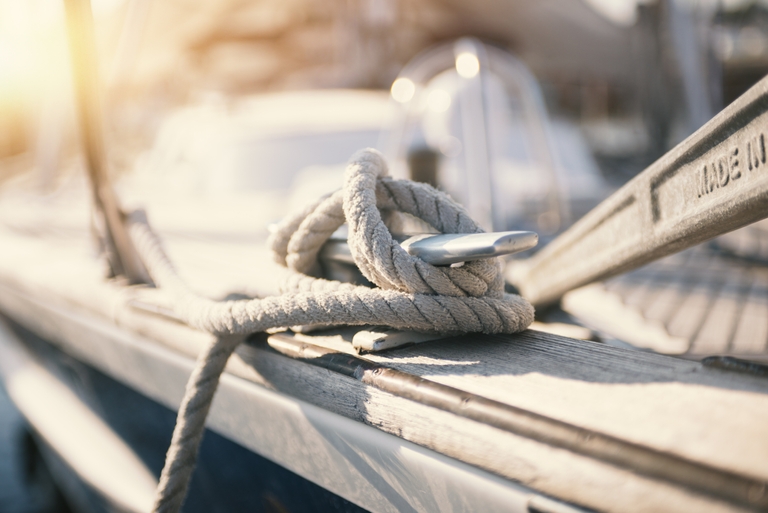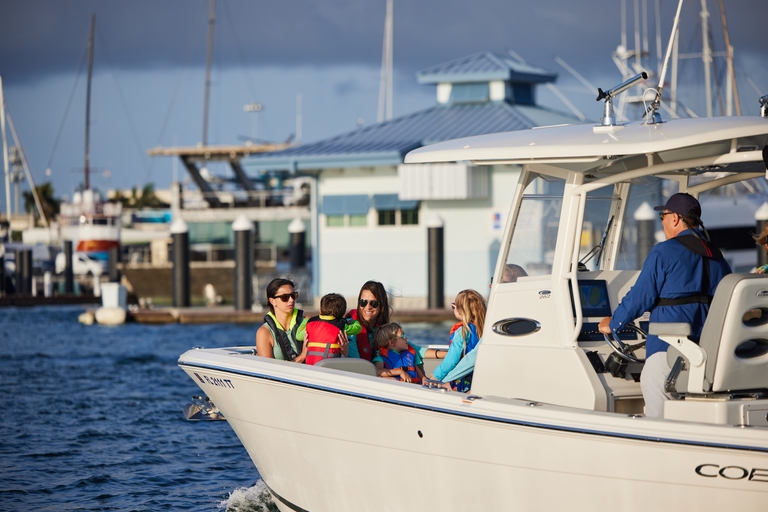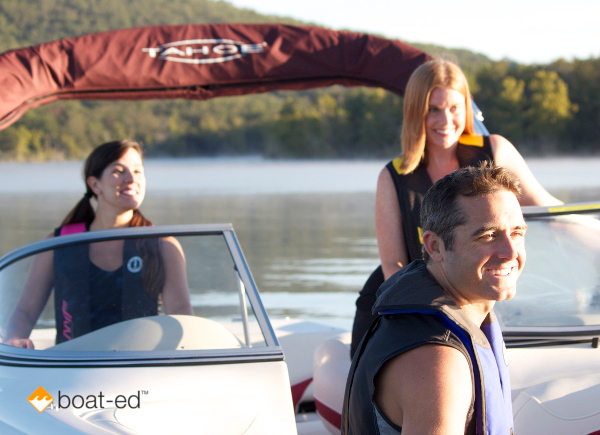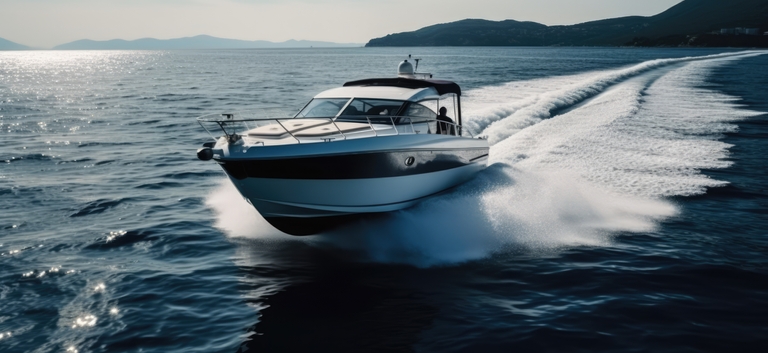Doggone it! 7 Tips for Boating With Dogs and Pets Safely
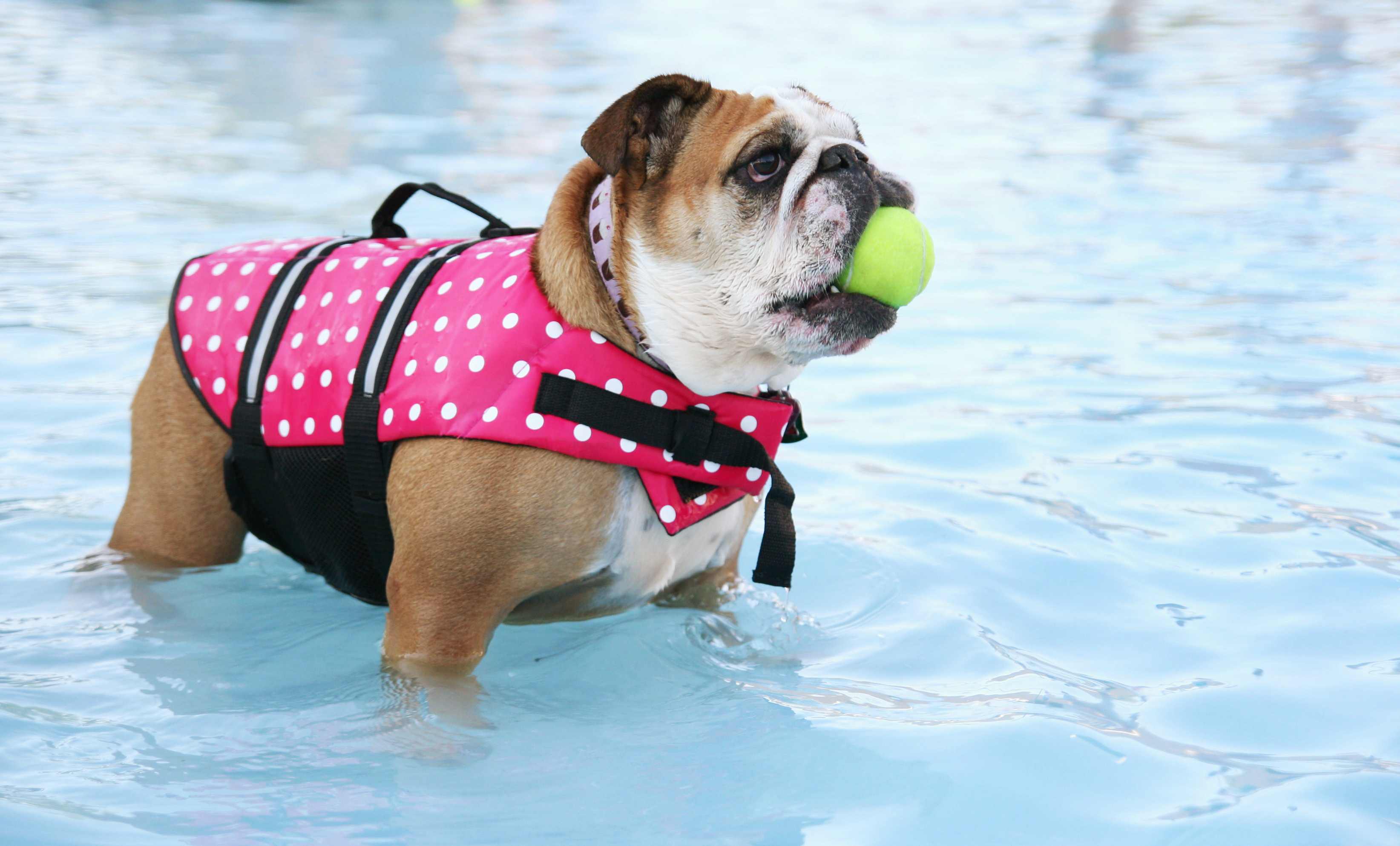
If your dog loves the water, it could be a routine part of your summer to take your dog with you for a day on the water. Many dogs love being on a boat and playing in the water.
However, not all dogs are great on boats! Even if your dog isn't afraid of the water, they may not understand how to avoid danger while riding in the boat. Other dogs might not enjoy the water or the boat, but your plans include bringing the family pet on your day on the lake or a longer trip over several days or weeks on your vessel.
No matter if your pet loves or merely tolerates being on a boat, it's essential for their safety (and yours) to apply safety best practices. Whether you've taken your state's required boater safety course or not, follow these seven safety tips from the Boat-Ed team and Carolyn Sherlock (a blogger at The Boat Galley) when boating with dogs.
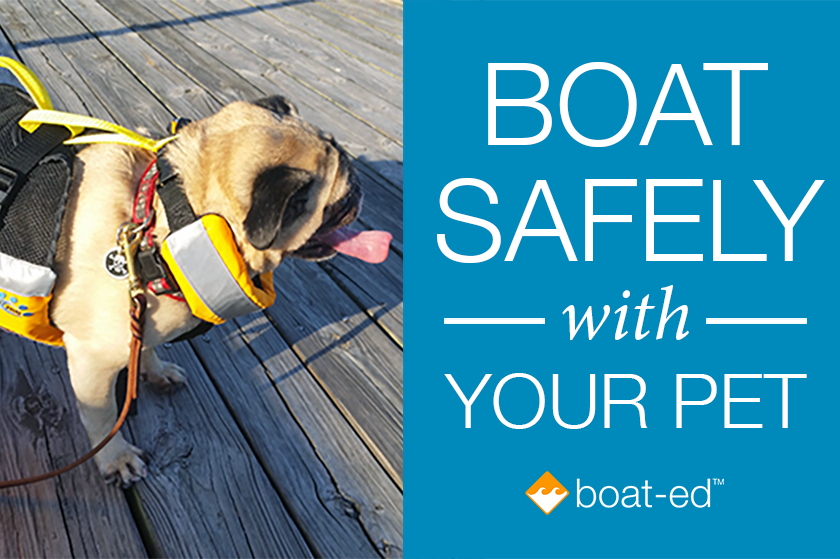
1. Slowly Acclimate Your Pet to Being on a Boat
Before launching, let your pet explore your boat while it's secured at the dock. This helps your pet get familiar with their surroundings in a controlled environment.
While they explore the boat, try running the engine to make sure they're comfortable with the noise. You wouldn't want them to panic at the sound of the engine right before heading out!
2. Make Sure Your Pet Knows Safety Commands
While you may be hard-pressed to find a cat that will listen to verbal orders, it's always a good idea to teach your dog basic safety commands like "sit," "stay," and "on/off boat."
Controlling your dog's behavior while on the boat is crucial. An out-of-control dog onboard can lead to an injury for you or your passengers. Or worse, someone could fall overboard.
Additionally, if your dog falls overboard because they don't listen to safety commands, they could become injured or cause an injury while you try to pull them out of the water.
Reward your pet with their favorite treats when they obey commands by sitting and staying, especially when a lot of activity is happening on or around the boat.
3. Get a Lifejacket for Your Dog
Are dogs required to wear life jackets on boats? No, but it's a good idea for them to wear one! Just because your dog or cat can swim doesn't mean he doesn't need a life jacket.
Your pet might fall overboard and panic, forgetting how to swim. Or, inclement weather and tiredness could make swimming too challenging.
Just like lifejackets for people, to keep your pet safe, get a well-fitting life jacket with a handle so you can easily pull your pet out of the water. Before your voyage, let your pet practice swimming with the life jacket on.
4. Have Plenty of Water to Avoid Dehydration and Overheating
Carolyn says, "Out in the sun, it's easy for pets to get dehydrated. Water should be available all the time, but sometimes that's not really feasible when underway. Our rule is that if we get a drink for ourselves, we get a bowl for the dog, hold it where she can reach it, and encourage her to drink."
In other words, don't forget the water dish! Keep your pet well hydrated while on the water.
5. Bring Seasickness Medication
Humans aren't the only ones who get a bit queasy when cruising. Pets can get seasick, too!
Check with your vet to see what medications you should have on hand, just in case. Keeping your dog hydrated and having seasickness medicine can help them stay safe and healthy while boating.
6. Keep an Eye On Your Pet
Even though your boat has limited room for them to run or hide, make sure you know where your pet is at all times, just as you would a child!
The Boat Galley's Carolyn opts for a leash to ensure her pup doesn't fall overboard.
She says, "We use a leash to make sure that our dog can't fall off or get into potentially dangerous areas of the boat. If they do fall or slide, a collar could injure a dog's neck, so we use a snug-fitting harness. Underway, we tie the free end of the leash to a secure point on the boat. Make sure your dog can reach a shady and secure place while hooked up."
When leashing your dog on the boat, periodically check on them to make sure the leash isn't tangled or causing discomfort.
7. Watch Their Footing
Unless it's a perfectly smooth day on the water or you've anchored the boat, chances are it's bobbing in the water – at least a little bit. This can cause unstable footing conditions for your pet.
Carolyn shares one last piece of advice for boaters sailing with pets: "If you watch your dog, you'll notice where they don't feel very sure-footed on the boat. We use adhesive non-slip strips made for the shower to give our dog better footing in those places."
If waters become too rough, causing your dog to consistently lose balance and footing, holding them close to you or in your lap can help them feel more comfortable.
Remember, some animals just don't handle water or boating well. If your pet seems to have an intense fear of water or being on your boat, it's best to leave them at home.
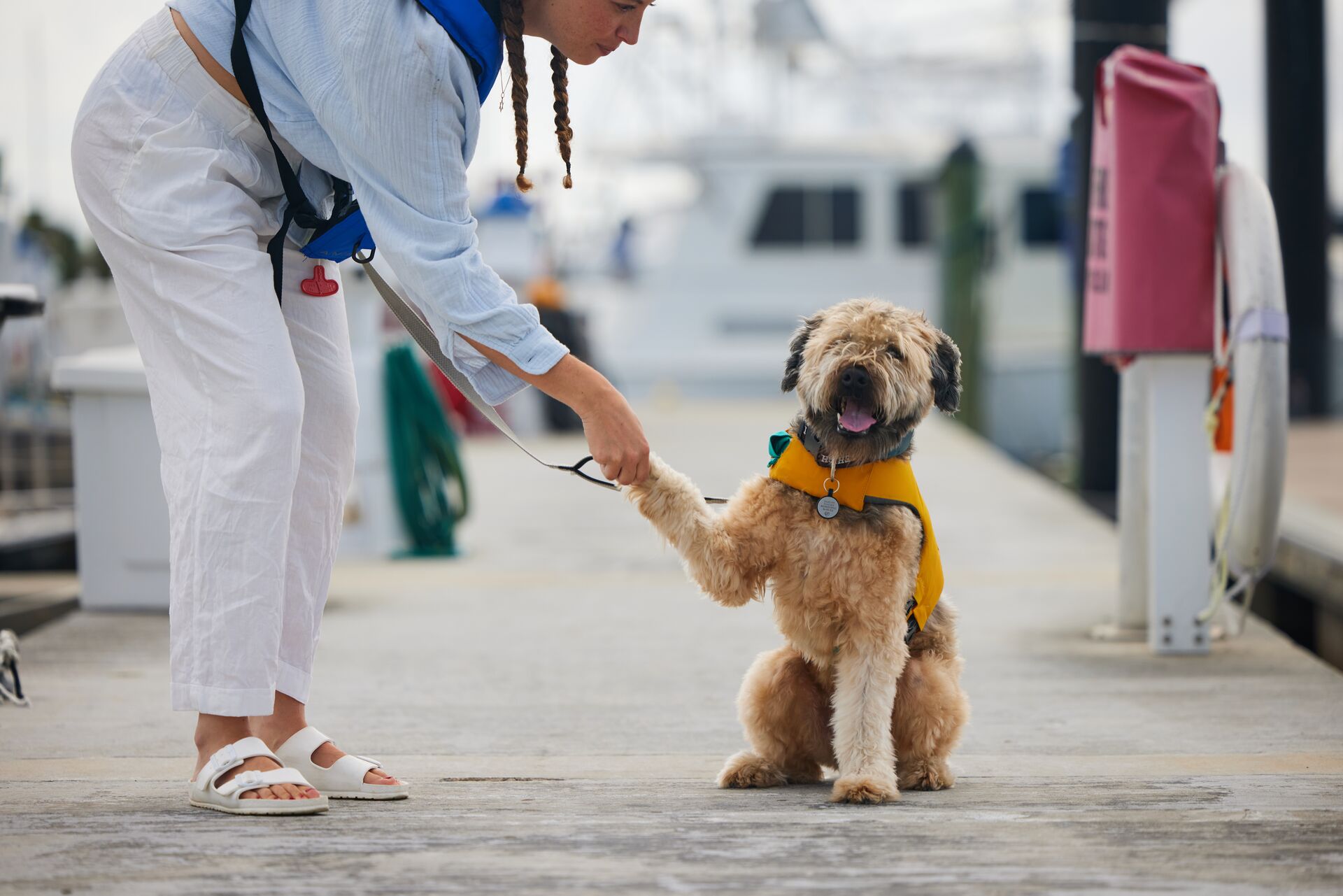
Keep People and Dogs on Boats Safe with a Boater Safety Course
We hope these tips help you and your pet enjoy boating this season!
Before hitting the water with people or pets, make sure you're certified. All states require boat operators to pass a boater safety course and exam for a boating license.
Boat-Ed makes it easy to get certified! Our courses and exams are online so that you can learn at your pace from a mobile device or desktop computer. Then, when boat season arrives, you're ready to safely take your pet, friends, and family out on the water!
Find your course, create your account, and start learning!

About the Contributor: Carolyn Shearlock is an author and blogger for The Boat Galley, sharing boat-friendly recipes.
Originally published June 29, 2015. Content updated February 1, 2024.
Featured pup belongs to the Galley Pirates.

